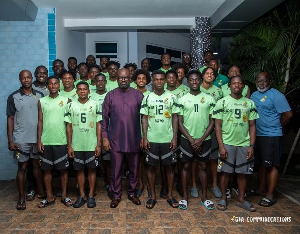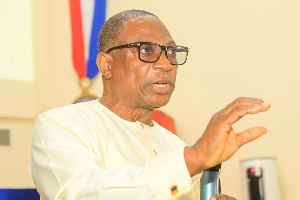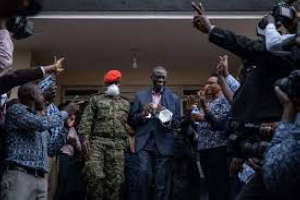TAPE EXPOSES KOFI BOAKYE
...He mentioned Otumfuo more than five times
Accra, Sept. 26 (Palaver) -- EVEN before any work could be done on the report of the Justice Georgina Wood (Cocaine-searching) Committee, many Ghanaians, including some legal experts, have dismissed it as an uncompleted work or “half-pure”.
According to the critics, they find it quite irregular, in the cause of justice, that the committee could arrive at any form of conclusion, with its findings, after failing to invite certain persons, whose names had been mentioned, in connection with the case, to assist it with their evidence. High on the list of such vital witnesses, they maintain, is the Otumfuo Osei Tutu II, the Asantehene and his Secretary, whose evidence could have helped to stop, instead of keeping the rumour mill in motion, for sometime to come. A close study of the recordings made on tape at a “Cocaine-Investigation” meeting, held at the residence of the Director-General of Operations of the Ghana Police Service, ACP Kofi Boakye, as well as snippets gathered in subsequent inter-actions at the committee's sitting, reveal that the top police investigating officer had made references about contacts made by the Asantehene with the former.
During those contacts, Mr Kofi Boakye had claimed the Asantehene had attempted to stop him from proceeding with his investigations.
That aspect of the case had deepened public interest to the extent that there had been a general call for an invitation to be extended to the Asantehene to appear before the Committee, possibly to clarify the situation. For weeks, ACP Kofi Boakye kept his cool. For weeks, the Committee observed a golden silence on the issue, as if it had seen nothing and heard nothing. Then, just after the committee had shut its doors for further hearings, ACP Kofi Boakye, in an interview with "The Ghana Palaver", claimed he had never mentioned the name of Otumfuo in connection with the case. It was obviously an after-thought, a failed attempt to make “a mockery of the truth.”
No one even bothered to take a look at the denial, which was generally believed to be a “belated lie.”
Meanwhile, although the announcement of the submission of the Georgina Wood Committee report to the Minister of Interior, Mr Albert Kan-Dapaah had been preceded with the loudest of crowd-pulling publicity, the function, itself, turned out to be most disappointing, as its news-worthiness was almost nil. Perhaps, it was a day of lamentations, as Mrs Justice Wood said the illicit drug trade, which thrived on corruption, posed a real threat to the country’s safety and security.
To her, the “business” had the potential of not only destroying the major institutions of state (including chieftaincy?), but the human resource base as well.
In reply, the Minister appealed to the media and the general public to help maintain the PURITY (caps own) of the committee’s report by avoiding speculations and rumours on its contents.
And, perhaps, that objective could have been achieved if the committee had not gone half-way with its work and added more mystery to the exercise, by refusing to give the slightest of hint about its contents.
The decision to go “mum” was felt unnecessary by many, as a pro-Government private newspaper, even before the “presentation” ceremony had given hints about the contents of the report.
Who and for what purpose was part of the report leaked to the pro-Government newspaper?
Besides, how “pure” is the report, with its legs, already displayed outside? The failure to invite all the relevant witnesses to the committee makes the report incomplete and will need a lot of convincing job for it to receive a half-credibility. This is a public demand. But, with all these, the unanswered question is: Where is the missing cocaine?












